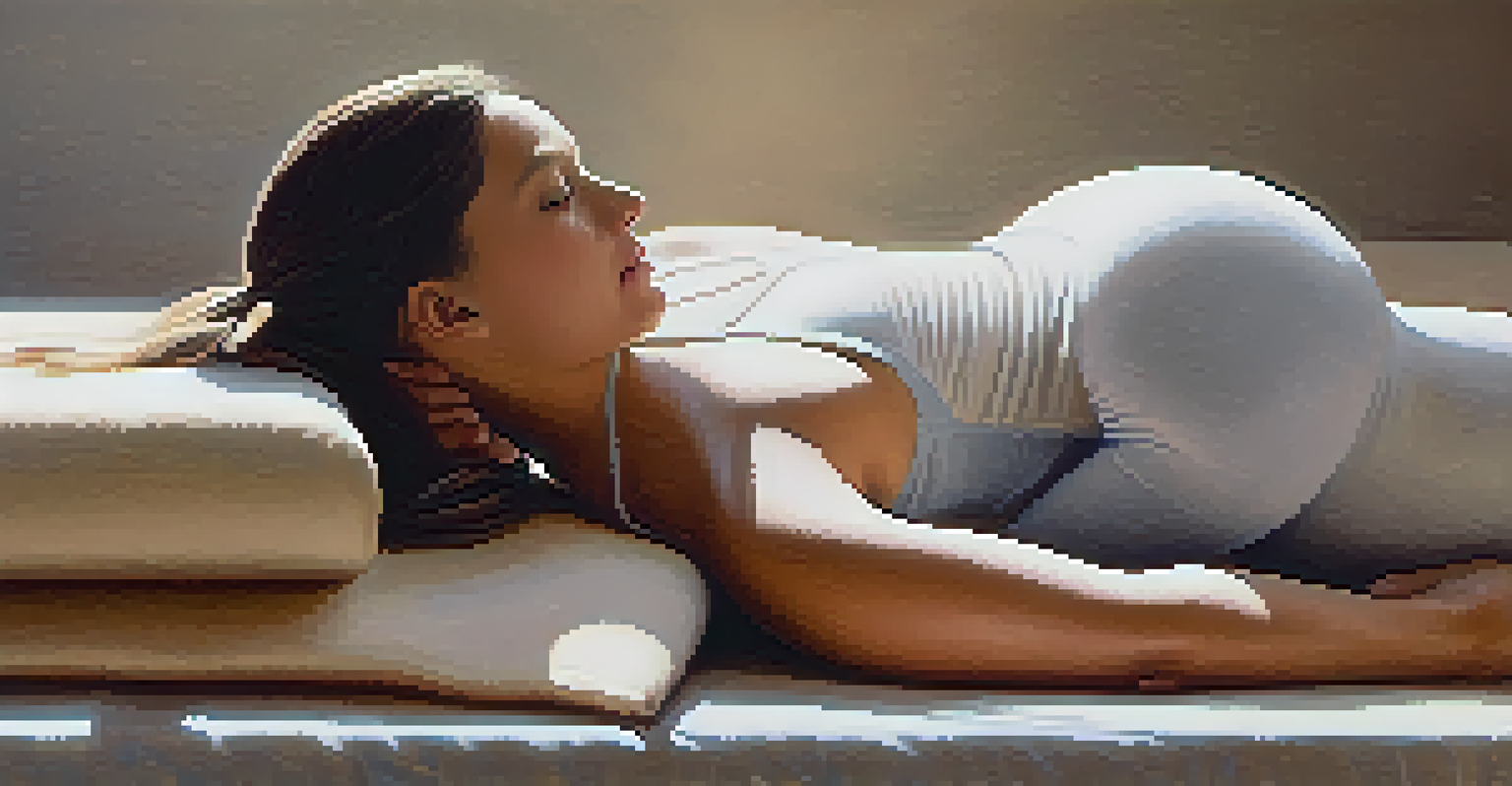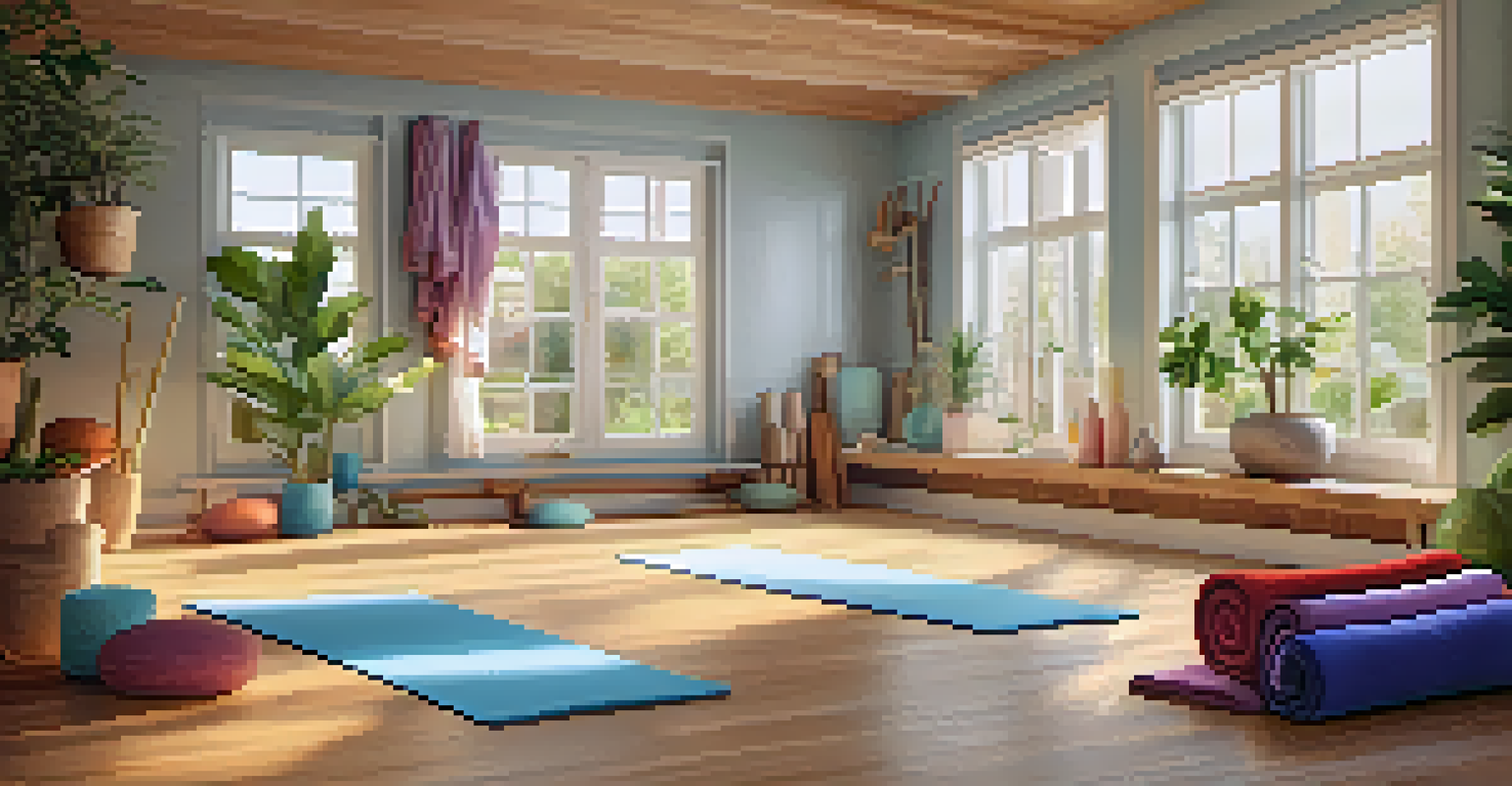Understanding Restorative Yoga: A Pathway to Deep Relaxation

What is Restorative Yoga and Its Benefits
Restorative yoga is a gentle form of yoga that focuses on relaxation and healing. Unlike more active styles, it involves holding poses for extended periods, typically supported by props. This practice helps to calm the nervous system, making it a perfect antidote to the stresses of daily life.
Yoga is not about touching your toes, it is what you learn on the way down.
The primary goal of restorative yoga is to promote deep relaxation. By allowing the body to rest, it encourages a state of mental and physical calm. This can lead to numerous benefits, such as reduced anxiety, improved sleep quality, and enhanced emotional resilience.
For many, restorative yoga can serve as a refuge from the chaos around them. It's a time to disconnect from technology and reconnect with oneself, fostering a sense of peace that can carry into daily activities.
The Role of Props in Restorative Yoga
In restorative yoga, props play a central role in facilitating relaxation. Items like bolsters, blankets, and straps support the body in various poses, allowing for a deeper release of tension. This means that even those new to yoga can enjoy the benefits without feeling overwhelmed.

Using props can transform a simple pose into a comforting experience. For example, a bolster can cradle the back in a supported bridge pose, helping to alleviate stress on the spine. This support encourages the body to let go, promoting a restorative effect that’s both physical and mental.
Restorative Yoga Promotes Relaxation
This gentle form of yoga helps reduce stress and anxiety by encouraging deep relaxation through supported poses.
Ultimately, props are not just tools; they are partners in your practice. They create a nurturing environment that invites you to explore stillness and presence, making restorative yoga accessible to everyone, regardless of their experience level.
The Importance of Breath in Restorative Yoga
Breath is a fundamental element of restorative yoga, acting as a bridge between body and mind. Practitioners are encouraged to focus on their breath, cultivating awareness of each inhale and exhale. This mindfulness helps to deepen relaxation and enhances the overall experience.
The body is your temple. Keep it pure and clean for the soul to reside in.
As you settle into each pose, deep breathing signals the body to relax. This physiological response reduces stress and tension, allowing for a gentle release of emotions that may have been held in the body. By tuning into your breath, you create a harmonious flow that amplifies the restorative benefits.
In essence, breath can be a powerful tool for transformation. It not only calms the mind but also serves as a reminder to remain present, helping practitioners to fully embrace the moment and their experience on the mat.
Restorative Yoga for Stress Relief
In today's fast-paced world, stress relief is more important than ever. Restorative yoga provides a sanctuary where individuals can unwind and decompress. By focusing on gentle movements and breathing, it allows for a release of built-up stress and tension.
Research has shown that regular practice of restorative yoga can lead to lower levels of cortisol, the body's primary stress hormone. This means that incorporating restorative sessions into your routine can contribute to a more balanced and peaceful state of mind. It’s like hitting the reset button on your day.
Props Enhance the Practice
Using props like bolsters and blankets allows practitioners to hold poses comfortably, facilitating a deeper release of tension.
Many practitioners report feeling a sense of tranquility after a restorative yoga session. This newfound calm not only improves mental clarity but also enhances overall emotional well-being, making it an invaluable tool for those grappling with daily stressors.
Creating a Home Restorative Yoga Practice
Establishing a restorative yoga practice at home can be incredibly rewarding. Start by creating a dedicated space where you can relax without distractions. This could be a quiet corner of a room, adorned with calming colors and soft lighting to set the mood.
Gathering the necessary props is essential for an effective home practice. Items like blankets, cushions, and bolsters can easily be found around the house or purchased online. Having these tools at your fingertips will encourage you to engage in restorative yoga more frequently.
Consistency is key when it comes to developing your practice. Even dedicating just 15 minutes a few times a week can yield significant benefits. Over time, you’ll cultivate a deeper connection to your body and mind, enhancing your relaxation and overall well-being.
Who Can Benefit from Restorative Yoga?
Restorative yoga is suitable for nearly everyone, regardless of age or fitness level. It's particularly beneficial for those dealing with chronic stress, anxiety, or physical ailments. The gentle approach invites participants to honor their bodies and listen to their needs.
In fact, many healthcare professionals recommend restorative yoga for its therapeutic effects. It can aid in recovery from injuries, help manage chronic pain, and even support mental health. The inclusive nature of this practice makes it a wonderful option for anyone seeking relief and relaxation.
Mindfulness Deepens Experience
Incorporating mindfulness into restorative yoga fosters a stronger connection between body and mind, enhancing overall relaxation and clarity.
Ultimately, restorative yoga serves as a reminder that self-care is essential. It encourages individuals to slow down, check in with themselves, and prioritize their well-being, making it a valuable addition to any wellness routine.
Incorporating Mindfulness into Restorative Yoga
Mindfulness is a key component of restorative yoga, as it encourages presence and awareness. Practitioners are often guided to focus on sensations in their bodies, the rhythm of their breath, and the thoughts that arise. This practice fosters a deeper connection between mind and body.
By incorporating mindfulness, you can enhance the effects of restorative yoga. This means letting go of distractions and fully immersing yourself in the experience. Over time, this practice can cultivate a greater sense of calm and clarity, both on and off the mat.

Moreover, mindfulness can extend beyond your yoga practice. It serves as a powerful tool for everyday life, helping you navigate challenges with more grace and poise. Embracing mindfulness in restorative yoga can lead to lasting changes in your overall approach to stress and well-being.